Ever wondered why you tune your guitar? If you answered "to tighten the strings," you are probably right, but there happens to be another reason behind this. The answer to this question is all in the buzz.
A fret buzz or guitar buzz is a prevalent problem that's been seen throughout guitar history. This annoying sound is caused when a guitar strings rattles against a fret on the neck when it is played or plucked.
There are factors that are beyond your control when it comes to guitar buzz. But there are few things you can control.
- Why Does My Guitar
- Conclusion
- FAQs
- 1. What causes buzzing sounds in my guitar?
- 2. How can I tell if the buzz is from the strings or the fretboard?
- 3. What is guitar action, and how does it affect buzzing?
- 4. Can temperature and humidity changes cause my guitar to buzz?
- 5. How often should I check my guitar setup to avoid buzzing?
- 6. Should I try to fix buzzing issues on my own or consult a professional?
- 7. What tools do I need for basic guitar adjustments?
- 8. When is buzzing a sign of a bigger problem?
- 9. Can string choice affect buzzing in my guitar?
- 10. How can I prevent buzzing in my guitar?

Why Does My Guitar
Buzz : 8 Reasons When you start getting into the crux of the situation, you will find more than one reason your guitar is making a buzzing sound. Just to name a few
Inappropriate fret levelling
Improper Setup
Low Action on the strings
Not pressing the strings behind the fret
Not pressing your strings is enough
Neck has insufficient relief
Your strumming too hard
Changing the String gauge Some of these problems are related to strings or frets or how you play your guitar. But it's not a big deal; we will address each of these problems in detail and discuss a possible solution to go with them. Without wasting a moment, let's get on with our list.
Some of these problems are related to strings or frets or how you play your guitar. But it's not a big deal; we will address each of these problems in detail and discuss a possible solution to go with them. Without wasting a moment, let's get on with our list.
1. Uneven Frets
Every guitarist knows how vital the role of frets is on a guitar. Frets are the reason you have chords. This makes it all the more important to have all the frets on a level with each other. Every fret has to be at the same height.
You can feel the difference immediately when the frets are not at a level with each other, which means some frets will be visibly shorter or taller than others.
Out of all this inconsistent fret height, the taller frets are responsible for causing fret buzz because strings come in contact with these. Let's see what exactly happens.
Case 1- When frets #1 and #2 are the same height
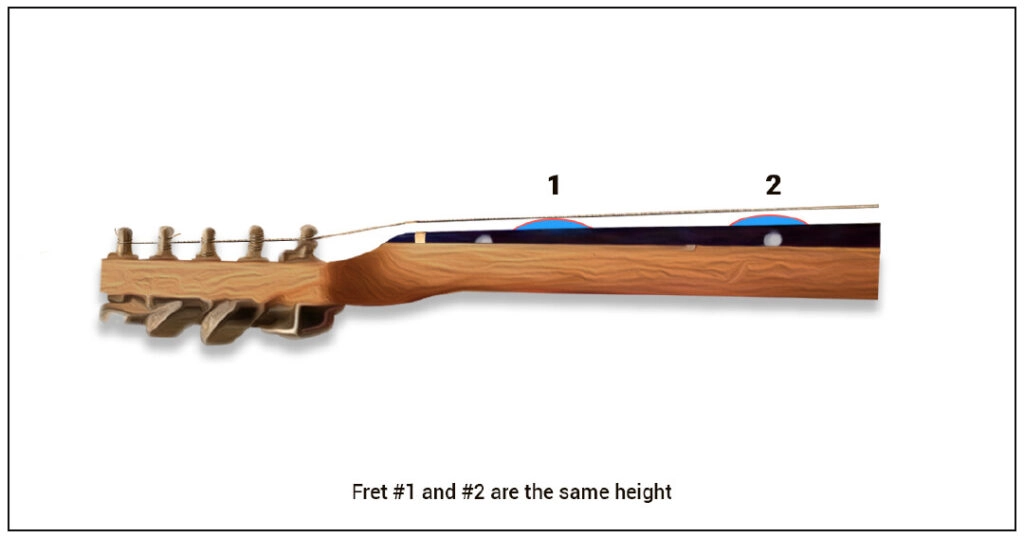
This is the ideal arrangement that you want your guitar to have. If two consecutive frets are precisely the same height on the fretboard, it results in a gap or space between the top fret of fret #2 and the bottom of the guitar string.
And since the guitar strings vibrate every time you strum, there needs to be enough space between the strings and the fret to allow the vibration without the two coming in contact. Now, let us see what you don't want to be experiencing.
Case 2- If fret #2 is taller than fret #1
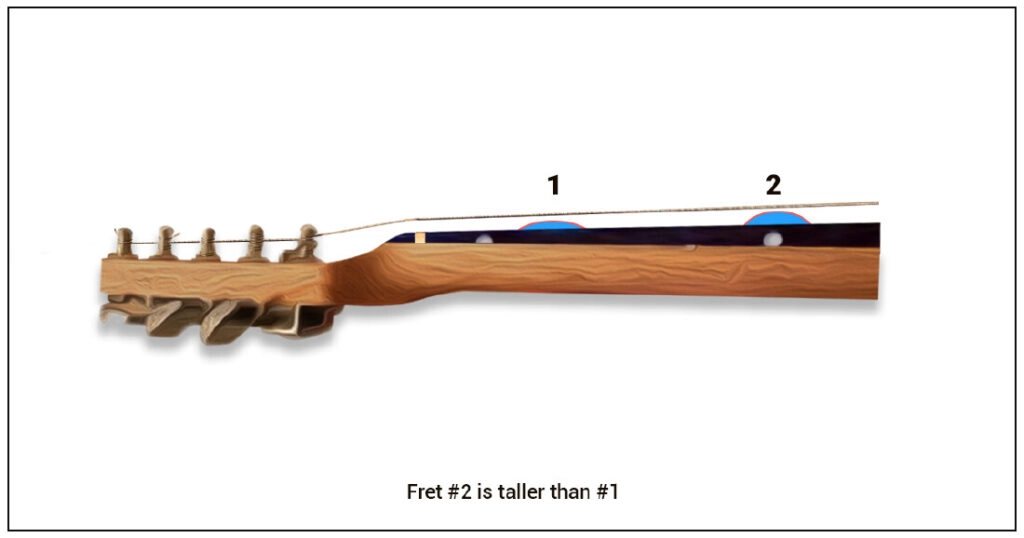
If fret #2 is taller than fret #1, there is not enough room between the bottom of the guitar string and the top of fret #2.
This means the guitar string will buzz against fret #2 every time the guitar is fretted and played at fret #1. In extreme cases, there won't be any gap between fret #2 and the guitar string, which gives you a dead fret…the guitar won't even make a tone.
Case 3- if fret #2 is shorter than fret #1
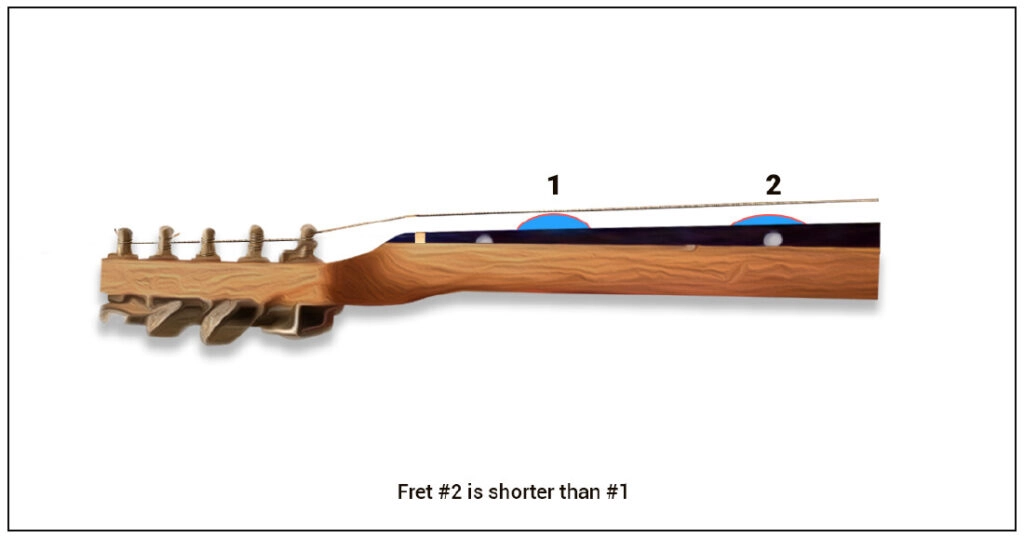
If fret #2 is very low it will increase the space between itself and the bottom of the guitar strings. This means that the strings could be fretted and played aggressively at first fret and still not buzz because there is a lot of room for the strings to vibrate.
After looking at each of these 3 situations, it is clear as day that all the frets on the guitar need to be of the same height or level. Solution: Get a complete fret levelling done by a professional.
2. Improper Setup
Guitar has a few points for the adjustment that are all interdependent. If you adjust one thing, it'll affect something else. It's very tricky if you try to do it on your own. Take for instance, the truss rod. The truss rod affects the guitar string height. If it is too high, the instrument will be harder to play. If it's low, your strings will buzz.
Then there is the nut region. The nut handles keeping the strings in place. Making adjustments at the nut won't affect the truss roads but the opposite isn't true. The tension in the neck might increase if you don't pay attention while adjusting nuts.
If you try to make string adjustments with the nuts, it'll be a laborious task and the changes you make can't be undone. If you do this improperly your guitar setup can be compromised for a decent period. And lastly to top it all off we have the bridge, it is the counterpart to the nut.
Depending on the guitars design, the strings could end here. The bridge is point for three different adjustments, and if done by untrained hands can lead to a disaster, it can mess up your guitar intonation really badly.
So all these along with uneven frets cause improper setup of your guitar and give you the buzz Solution: Get your guitar tuned by a professional. It is the best way to ensure proper setup and naturally buzz-free guitar.
3. Low Action
On the Strings
String action is the string height measured to a specific fret. Your guitar should have constant string action throughout the guitar, or else you'll experience the buzz.
A great way to check if the string action is correct is to look at the 1st fret, 12th fret, and 17th fret. It is the most common way to check the string action. While different players prefer different string actions, the method for checking it is same.
Although the string action is the distance between the strings and the fret, you can't actually measure it with a ruler. You will have to use a string action gauge to measure your guitar string action accurately. If you have the instrument to measure the string action, you can do it yourself or take it to a professional.
If you would like to do the adjustment yourself: Loosen the strings a bit to relieve tension on the strings and increase the string action by adjusting them at the string saddle, which is located on the bridge saddle.
4. Not pressing
The strings behind the fret When you push down on the strings to produce a note, your fingers should be pressing down on the fretboard as close to a fret as possible. The further you are from a fret, the harder you have to press to get a clear note; otherwise, it's just buzz town all in your ear.
That said, it is easy if you are just strumming the strings for a note, but playing a chord is a different game altogether. When playing the 8 basic chords, make sure you get all your fingers behind a fret as much as possible. But don't worry if you can't put all your fingers behind the fret when it comes to complex chords. You can master this with practice and patience

5. Not pressing
The strings hard enough Even if you place your fingers right behind the fret, you will still experience the buzz against the metal fret if you don't press down hard enough.
Don't worry about this issue if you are a newbie because it takes time, patience, and practice with solid fingertips to apply enough pressure on the strings to produce a clear note.
You can experiment with using guitar capo and see how much pressure is needed to press the strings properly. This issue isn't something that can be solved instantly; you'll have to train long and hard to improve technique and proper posture. You can also opt for guitar lessons to speed up your progress.
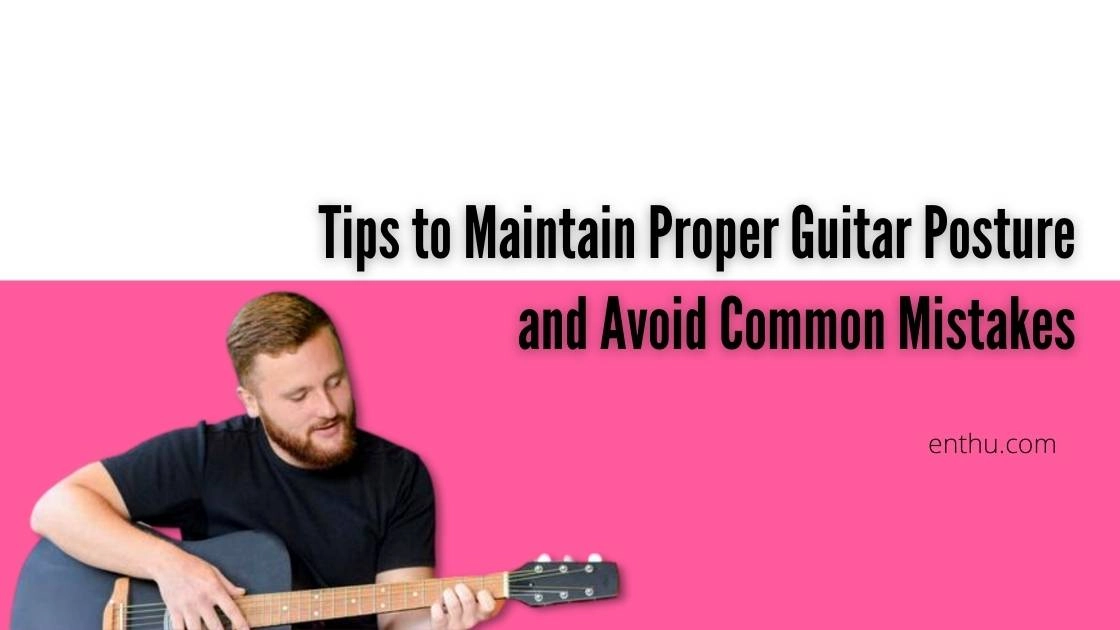
6. Neck has insufficient Relief
Most beginners focus too much on the strings, the body, and the tuning pegs but forget to check the neck. The neck of your guitar is supposed to be perfectly straight as an arrow, that is, without string tension.
If you do have strings and they are tuned to pitch, it should have a slight dip in the middle. That dip is called neck relief. If the dip is in the middle, we call it a forward dip. If there is no dip and more like a hump, we call it a back bow, which is always bad.
A back bow means that there is not enough relief in the neck, which causes almost all open strings to buzz. It would be convenient if you could just set it and forget it, but that is rarely the case; the bend in your guitar neck can change over a period because of many factors:
Temperature
String gauge
Humidity
Tuning
Solution: If you experience the buzz in your strings when you play them open, it is the back bow neck. Simply increase the relief in the neck by loosening the truss rod.
7. You are strumming too Hard Passionately
Jamming out on your guitar or strumming hard isn't really a mistake, though it does cause fret buzz. But this is something that is in your control. Use just the right force and you'll produce a clean note.
8. Changing the String
Gauge Changing your string gauge affects the tension on your guitar neck; it may go forward or backward depending on the strings. So if your guitar plays buzz-free, crisp, and clean music with a particular gauge of string, stick to the same gauge when you get new ones. If you change to something else, they will buzz.
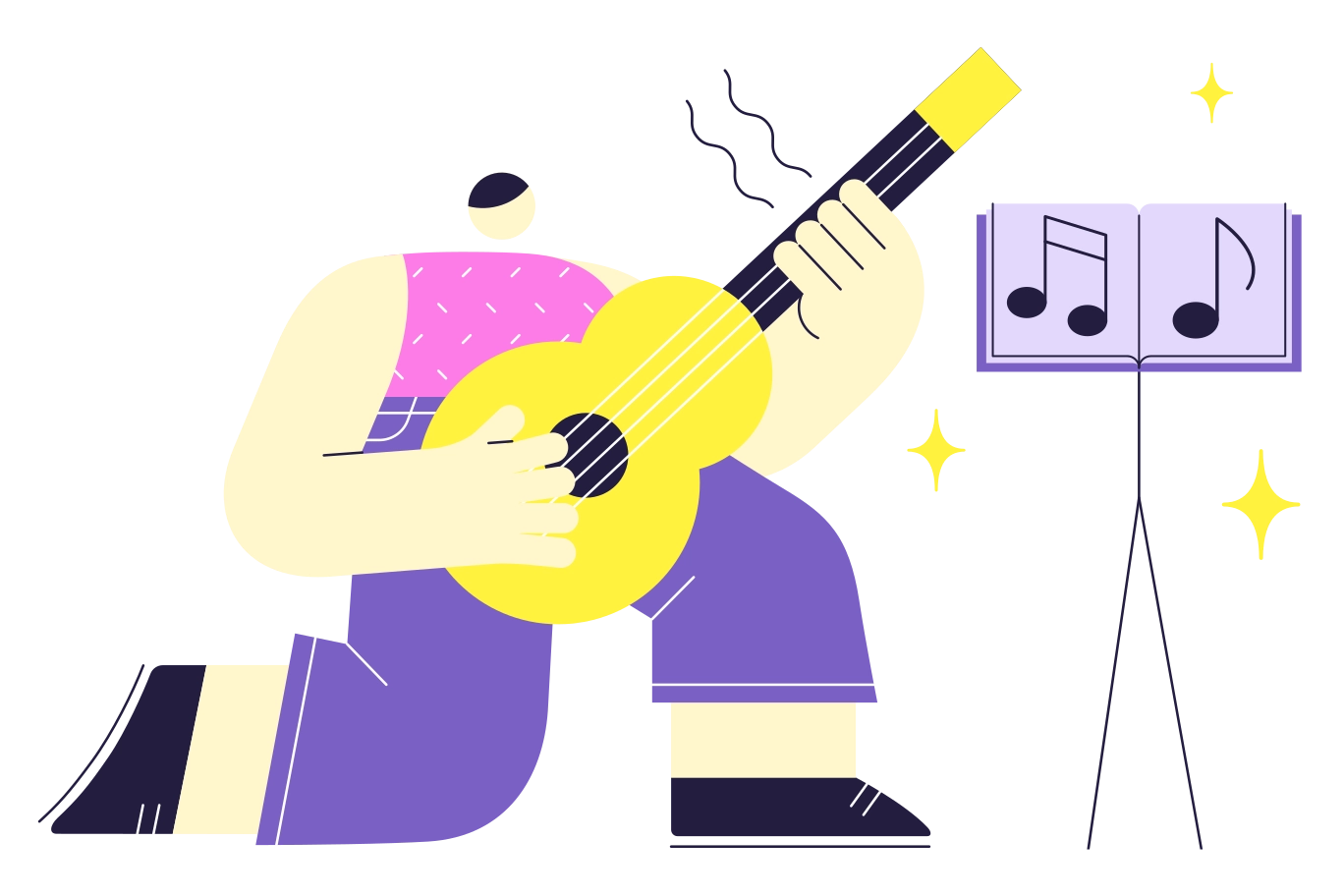

Conclusion
A buzzing guitar is not that big a deal, in our opinion; you can always find solutions to subtle problems if you are willing to put in the time. We have talked about 8 such causes as to why this happens, but these aren't the only ones that can mess up your guitar.
Things that can mess up your guitar may be out of your control, but there is no point in pondering over something you don't have control over. Simply putting your guitar back in its case, cleaning it regularly, and tuning it when necessary can give you a buzz-free guitar.
And if you pay attention to all the changes happening around and on the guitar and develop the skill to notice them, your guitar can live a long and healthy life.
FAQs
1. What causes buzzing sounds in my guitar?
Buzzing sounds in a guitar can be caused by several factors, including low action (the distance between strings and the fretboard), fret wear, incorrect neck relief, or a setup that needs adjustment. Environmental factors like humidity or temperature changes can also affect the instrument.
2. How can I tell if the buzz is from the strings or the fretboard?
To diagnose the source of the buzz, try playing individual frets on each string. If the buzzing occurs on specific frets, it may indicate a problem with that particular fret (e.g., it's too low or worn down). If the buzz happens across multiple frets or strings, the issue may lie in the overall setup.
3. What is guitar action, and how does it affect buzzing?
Guitar action refers to the height of the strings above the fretboard. If the action is too low, strings may touch the frets when played, resulting in buzzing. Adjusting the action by raising the bridge or adjusting the truss rod may help eliminate the issue.
4. Can temperature and humidity changes cause my guitar to buzz?
Yes, temperature and humidity can have a significant impact on your guitar. Wood can expand or contract with changes in these conditions, potentially affecting the neck relief and causing buzzing. Keeping your guitar in a stable environment can help minimize these issues.
5. How often should I check my guitar setup to avoid buzzing?
It's recommended to check your guitar setup at least once a season, or whenever you notice any changes in playability or sound quality. Regular maintenance can help prevent buzzing and ensure your guitar stays in top condition.
6. Should I try to fix buzzing issues on my own or consult a professional?
If you have experience with guitar maintenance, you can attempt minor adjustments yourself, such as changing the action or adjusting the truss rod. However, if the buzzing persists or if you feel uncertain about making adjustments, it’s best to consult a professional guitar technician for more complex issues.
7. What tools do I need for basic guitar adjustments?
For basic guitar adjustments, you will need a few essential tools, including an Allen wrench (for truss rod adjustments), a ruler or string action gauge, and possibly some screwdrivers for adjusting the bridge or pickups. Make sure to follow guides or videos to ensure proper technique.
8. When is buzzing a sign of a bigger problem?
If buzzing is accompanied by other issues such as difficulty playing in tune, strange sounds, or buzzing that occurs on every fret, it may indicate a more significant problem with the guitar’s neck, body, or internal components. In such cases, consulting a professional is recommended.
9. Can string choice affect buzzing in my guitar?
Yes, the type and gauge of strings can influence buzzing. Thicker strings may buzz less due to their greater tension, while lighter strings can be more prone to buzzing if the setup is not optimized for them. Experimenting with different strings can help you find the right balance for your guitar.
10. How can I prevent buzzing in my guitar?
To prevent buzzing, keep your guitar properly maintained by regularly checking the setup and making necessary adjustments. Store your guitar in a suitable environment, use quality strings, and play it consistently to keep it in good shape. Regularly consulting a professional can also help catch potential issues before they become significant problems.






Comments